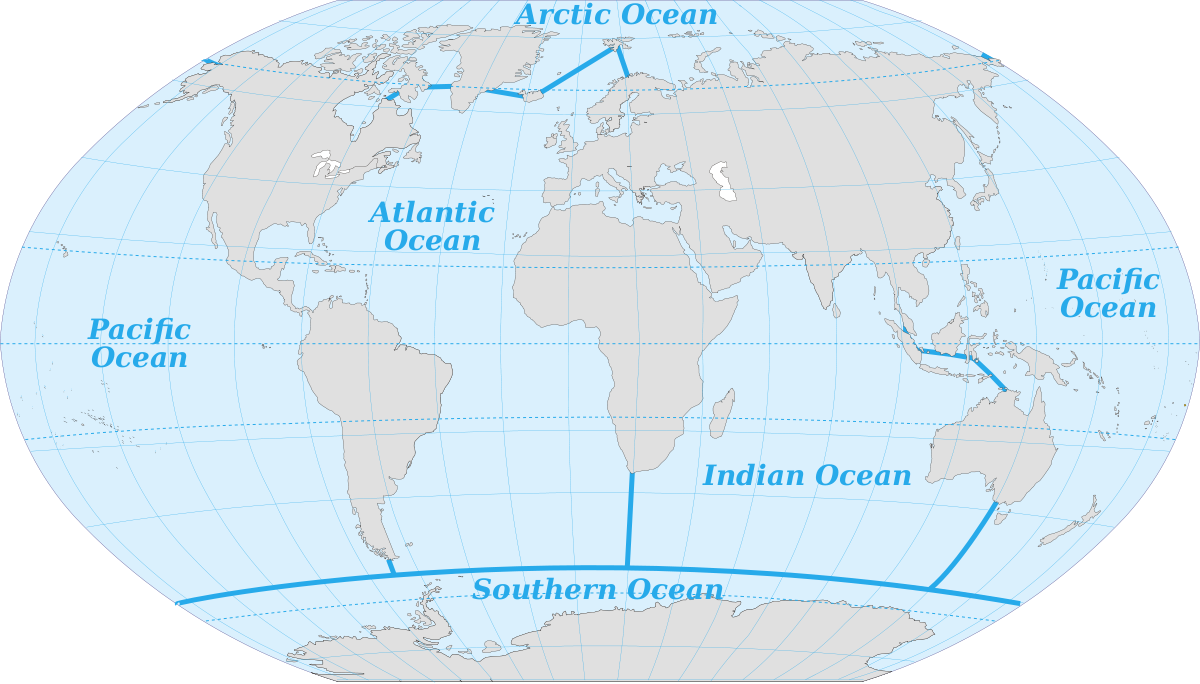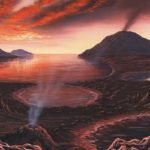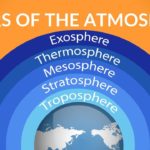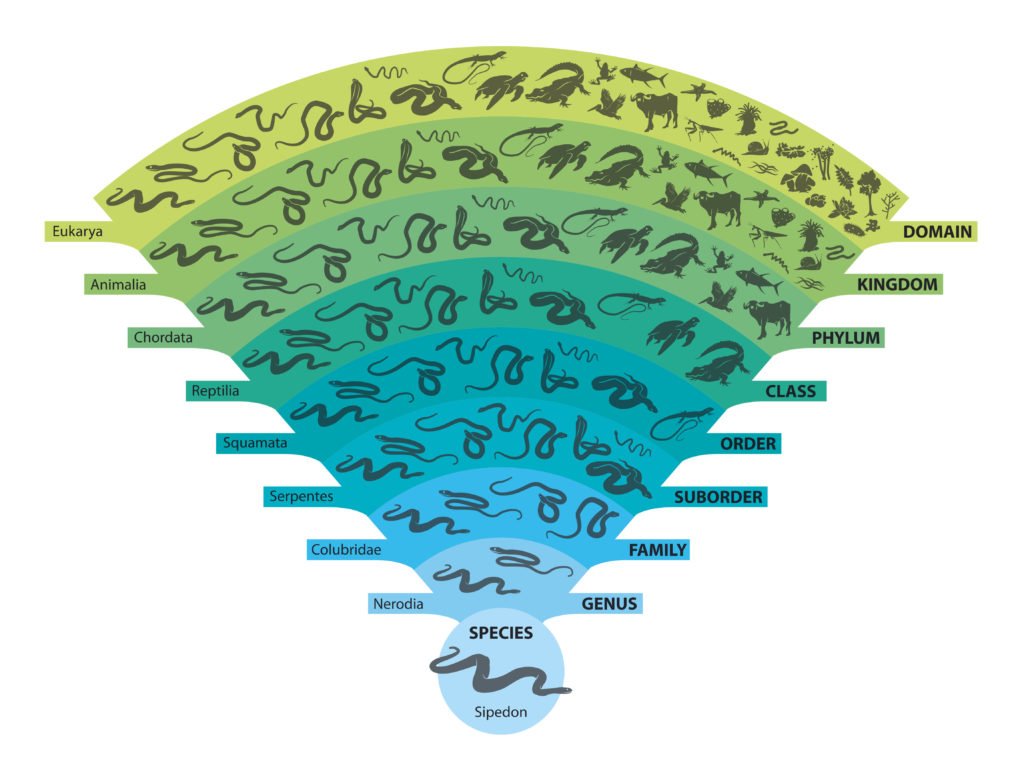Because most of the Earth’s water is found in the oceans, in order to understand the hydrosphere, we must understand these massive bodies of water. Fortunately, this is easier today than it has ever been. Modern technologies allow scientists to study the oceans in much greater detail than was possible to previous generations. You are fortunate to live in a time when this detailed knowledge is available to you.
Oceans Divided
In order to aid scientists in studying and understanding the vast seas of the Earth, researchers generally divide them into four distinct oceans. These oceans are the Pacific Ocean, the Atlantic Ocean, the Indian Ocean, and the Arctic Ocean.
These oceans are connected, forming one large ocean. Water from one of the four oceans is free to move into another ocean. Whales, fish, and other lifeforms from one ocean are free to travel to another.
In addition to these four oceans, a number of seas, bays and gulfs have also been designated. These are generally just smaller portions of one of the larger oceans, though in some cases, such as the Mediterranean Sea, they are almost completely cut off.
The Pacific Ocean

The largest of all the Earth’s oceans, the Pacific Ocean covers twice as much space as any other ocean, and more space than all the continents put together.
This vast body of water extends upward, touching the Arctic ocean, and also extends down to the shores of Antarctica. The bulk of this ocean, however, lies along the warm tropics. This makes the majority of the Pacific’s water warm.
The Pacific Ocean has the deepest average depth, and is also home to the deepest trenches on Earth. Much of the Pacific is dotted with small volcanic islands, such as Hawaii, Tonga and Samoa.
The Pacific Ocean is notorious for bad weather. Some of the most powerful storms are brewed within its waters.
The Atlantic Ocean

The Atlantic Ocean stretches from the Arctic Ocean downward to the shores of Antarctica. This makes it the same size from north to south as the Pacific Ocean. However, from east to west, the Atlantic Ocean is only about half as wide as the Pacific.
The Atlantic Ocean is a deep ocean. Its average depth is just slightly less than that of the Pacific Ocean. This ocean has far fewer islands than the Pacific.
The Arctic Ocean

The Arctic Ocean is both much smaller than the other oceans as well as more shallow. This ocean is connected to the Pacific and Atlantic Oceans via small gaps between continents.
This ocean is also much colder than the majority of the other oceans, with much of the water covered in a frozen ice cap.
The Indian Ocean

The Indian Ocean lies between Africa on the west, Australia on the east, Asia on the north, and Antarctica on the south. 90% of this ocean lies to the south of the Equator.
The Indian Ocean is just slightly less deep than the Atlantic Ocean.
The Southern Ocean / The Antarctic Ocean
The final ocean is known as either the Southern Ocean or as The Antarctic Ocean. Either name is considered acceptable. This ocean is very similar to the Arctic Ocean in that it is very cold, and in terms of life, it is very productive. There are more living organisms in these cold oceans than in any other part of the vast oceans of the world.






